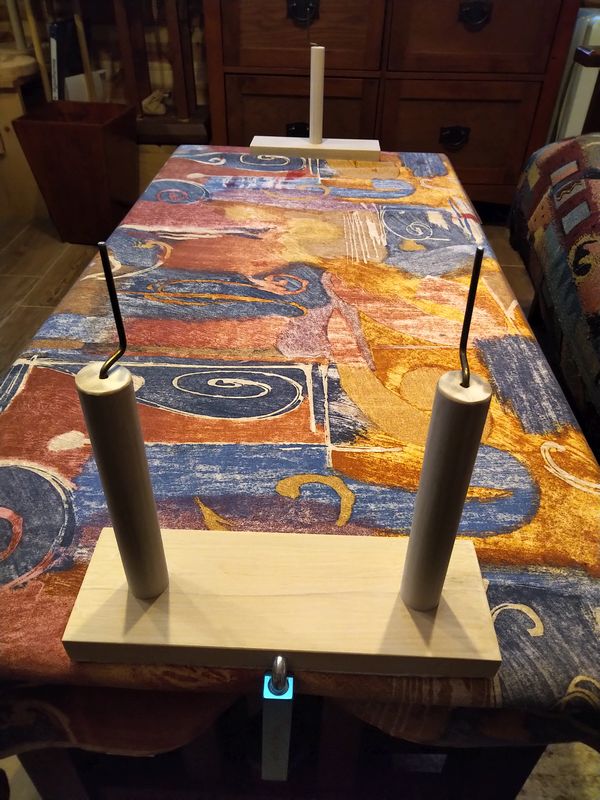Many braiders who choose to work in silk buy premeasured bundles of silk threads. These bundles are usually designed to produce braids that are a good length for the obijime braids worn with formal kimono.
When sweetie and I braid, we are often aiming for other lengths, or specific colors that it is more economical to buy in bulk on spools. Then, we measure out our own bundles. Traditionally, this would be done on tall warping stands called bodai. We use a kind of mini-bodai that clamp to the edges of a table. I have made a few sets of these in the past, but I just made a nice set for Sharon.
They are made entirely from cherry wood, except for the screws that attach the pegs to the bases, and the hookie thingies of course.
I bent the metal rod in a 4″ metal brake that I had to buy a 4″ bench vise to use. It was super easy doing it this way. The bends are exactly where I wanted them and used the mechanical advantage of the vise instead of brute force.
With the “2 and 1” pegs that i normally make, if you have a 4 foot table you can measure out 4′, 8′, and 16′ warps fairly easily. By making this “2 and 2” set, she can now add 12′ and 24′ to her repetoire for those longer or more complex braids.




